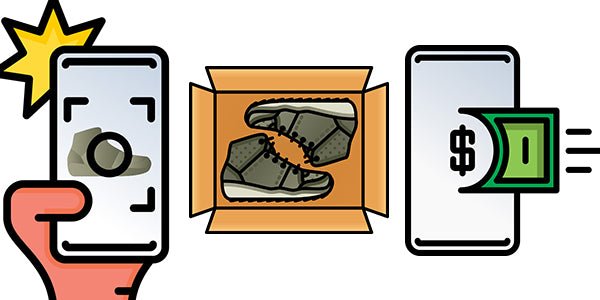How to Write a Great Product Description
One of the simplest ways to shoot yourself in the foot when listing an item on Geartrade is to not give it a proper written description. Your photos are important, (see how to take photos that will sell your gear fast for photo tips) but they’re not quite worth a full thousand words. You need to talk about what the item is, what it’s for, why it’s rad, what its specs are, and what condition it’s in. Trust is the biggest factor when someone is buying an UnNew piece of gear such as yours—they want to know if it’s what they want and expect. You can help paint the picture by including a few key details and following these pointers:1. Use a descriptive title.
There are a few great ingredients to include: what kind of item it is, what the brand is, what size, what color, etc. If it hasn’t been used, that’s good to note, too. New with tags, put that in there. Think how much better it is to be detailed: how much more do you want to buy a “The North Face VE 25 Four-Season Mountaineering Tent” versus a “North Face Tent”? The more detailed name wins out, every time. Not only do people have a better idea of what you’re selling, right off the bat, but they can also find you when searching for this kind of item.2. Tell the story of how it’s used and why it’s great.
Here’s the fun part: throw a paragraph or so together detailing what a stranger would want to know to get psyched about your item. Is your The North Face Tent amazing in snowy and windy conditions? Has it been used at high altitude and lived to tell the tale? How many people can sleep in it? And it has glow-in-the-dark color-coded zippers? (Why didn’t you mention this before?!)3. Make sure all relevant specs are noted.
This is something that’s frequently overlooked. It really helps prospective buyers if they know what your item weighs, what its dimensions are, how many pockets it has, etc. (This is often something you can find on the manufacturer’s site if your item isn’t very old and they’re still producing it.) In the case of our tent example, weight is a big deal. If you can tout that it’s a three-person expedition-worthy tent weighing in at just 10 pounds, that’s good stuff. And it tips the scales, quite literally, in your favor.4. Be honest about the condition of your gear.
Write about the scuff or small tear and detail it. It always helps to take a photo of the blemish and give it scale by showcasing it alongside a common item like a quarter or pencil. The more honest you can be, the less chance it will be returned.5. Now, go back and double check grammar and spelling.
You do not have to have the impeccable grammar of an English professor—far from it—but you do want to read your description aloud after you’ve taken at least a few minutes’ break from it. Jot it down, go do something else, and then come back to read it aloud to yourself and make sure every sentence sounds clear and easy to understand. For more info on How to Sell click here Beth Lopez is a seasoned writer and creative director who loves to tell tales of adventure and discovery—and finds writing a powerful way to give a voice to people, causes, and places. Beth runs amok in the Wasatch mountains when untethered from her computer. She believes there’s no such thing as a bad ski day and considers animals her favorite people. Don’t tell her mother about her Instagram mountaineering photos.
Beth Lopez is a seasoned writer and creative director who loves to tell tales of adventure and discovery—and finds writing a powerful way to give a voice to people, causes, and places. Beth runs amok in the Wasatch mountains when untethered from her computer. She believes there’s no such thing as a bad ski day and considers animals her favorite people. Don’t tell her mother about her Instagram mountaineering photos.



